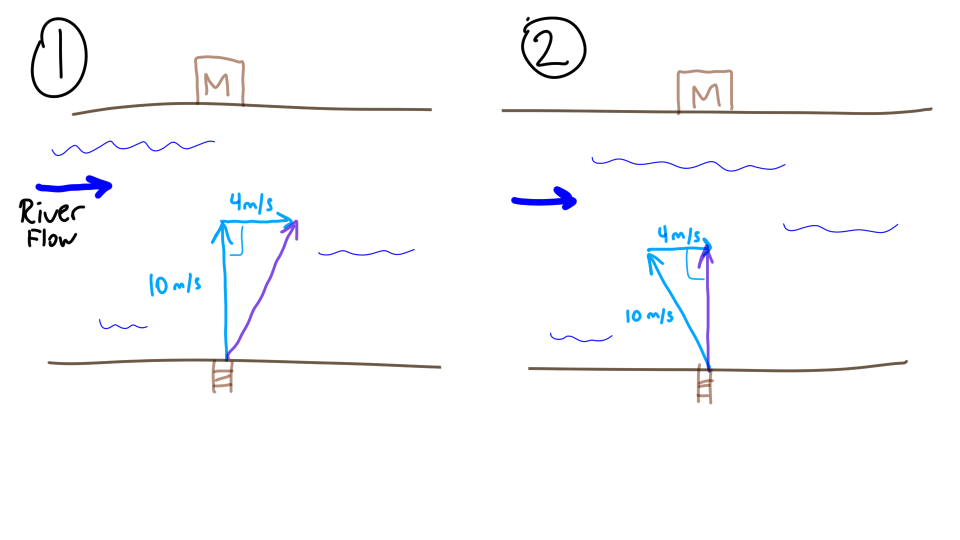A river is 900 m wide and flows at 4 m/s. Jo paddles a canoe at a speed of 10 m/s in still water. A dock and a marina are directly across from each other on the river. She paddles from the dock directly to the marina. How long does it take her to (cont.)?
cross the river?
cross the river?
1 Answer
It will take Jo about 98.2 seconds to cross the river.
(Or, to one significant figure, 100 seconds.)
Explanation:
If the water were still, then her velocity vector of
However, there is another vector affecting her velocity: the river flow rate. The sum of these two vectors will produce her net velocity vector. It is this net vector that must point towards the marina.
If she rows perpendicular to the river, the water will push her downstream. (Figure 1 below.) In order for Jo to travel straight from the dock to the marina, she must aim slightly upstream of the marina, so that her net velocity vector points towards the marina. (Figure 2)

The magnitude of the purple vector in Figure 2 is what we want to find, and we can do this by using Pythagorean's Theorem. Let
Now that we know how fast she will travel towards the marina, we use
#t="900 m"/"9.165 m/s"approx"98.2 s"#
Note:
Since this is a physics question, significant figures may need to be considered. All of the values given to us have one sig. fig., so our final answer should follow suit, and we would thus round it to

